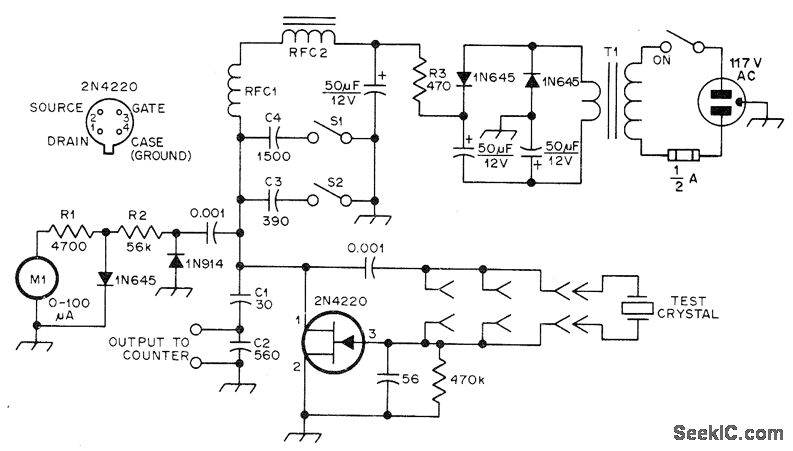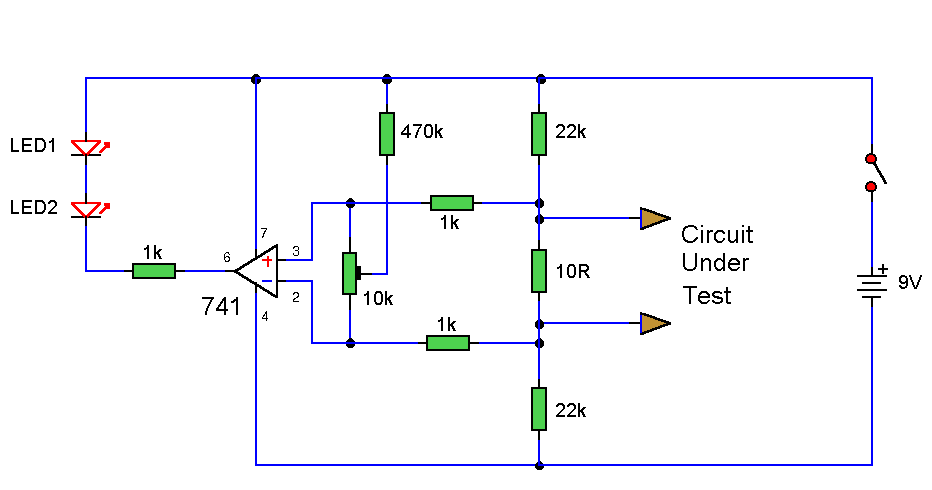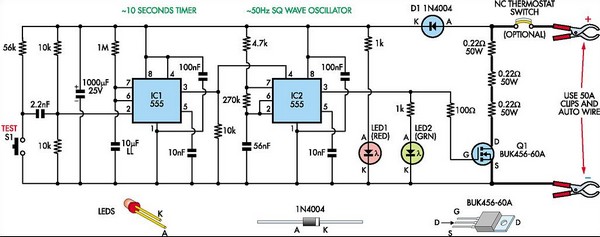
Ground tester

This circuit verifies the safety of appliances to ensure they can be used without risk. The test circuit is designed to be connected to a correctly wired three-terminal wall outlet. When either a two-lead or three-lead appliance is connected to the circuit outlet SOI, neon lamps NE1 and NE2 will illuminate if the appliance is deemed safe. If neon lamp NE2 lights up, it indicates that the appliance is hazardous, as the neutral lead is at 110 Vac above ground.
The described circuit functions as a safety testing device for electrical appliances, ensuring that users can operate their equipment without encountering electrical hazards. The circuit requires a proper three-terminal wall outlet, which typically consists of a live (hot), neutral, and ground connection.
Upon connecting an appliance to the circuit, the internal configuration of the testing device engages with the appliance’s wiring. Neon lamps NE1 and NE2 serve as visual indicators of the appliance's safety status. NE1 is typically connected to the hot lead and indicates that the circuit is live and functioning correctly. NE2, on the other hand, is connected to the neutral lead and is designed to illuminate under specific unsafe conditions.
In the event that NE2 lights up, it signifies a critical safety concern: the neutral lead is at a voltage of 110 Vac relative to ground. This situation suggests that the appliance may be improperly wired or malfunctioning, posing a risk of electric shock or fire. Consequently, the illumination of NE2 serves as a warning, prompting the user to refrain from using the appliance until it has been properly inspected and repaired.
The circuit's design emphasizes the importance of safety in electrical appliance usage, providing a straightforward method for users to verify the integrity of their devices before operation. This functionality is crucial in preventing electrical accidents and ensuring consumer safety in domestic and commercial environments.This circuit checks the reliability of appliances so that the equipment may be used safely. The test circuit must be plugged into a properly wired three terminal wall outlet. When a two-lead or three-lead appliance is plugged into circuit outlet SOI, neon lamps NE1 and NE2 will light if the appliance is safe If neon NE2 is lit the appliance is dangerous, because the neutral lead is 110 Vac above ground.
The described circuit functions as a safety testing device for electrical appliances, ensuring that users can operate their equipment without encountering electrical hazards. The circuit requires a proper three-terminal wall outlet, which typically consists of a live (hot), neutral, and ground connection.
Upon connecting an appliance to the circuit, the internal configuration of the testing device engages with the appliance’s wiring. Neon lamps NE1 and NE2 serve as visual indicators of the appliance's safety status. NE1 is typically connected to the hot lead and indicates that the circuit is live and functioning correctly. NE2, on the other hand, is connected to the neutral lead and is designed to illuminate under specific unsafe conditions.
In the event that NE2 lights up, it signifies a critical safety concern: the neutral lead is at a voltage of 110 Vac relative to ground. This situation suggests that the appliance may be improperly wired or malfunctioning, posing a risk of electric shock or fire. Consequently, the illumination of NE2 serves as a warning, prompting the user to refrain from using the appliance until it has been properly inspected and repaired.
The circuit's design emphasizes the importance of safety in electrical appliance usage, providing a straightforward method for users to verify the integrity of their devices before operation. This functionality is crucial in preventing electrical accidents and ensuring consumer safety in domestic and commercial environments.This circuit checks the reliability of appliances so that the equipment may be used safely. The test circuit must be plugged into a properly wired three terminal wall outlet. When a two-lead or three-lead appliance is plugged into circuit outlet SOI, neon lamps NE1 and NE2 will light if the appliance is safe If neon NE2 is lit the appliance is dangerous, because the neutral lead is 110 Vac above ground.





